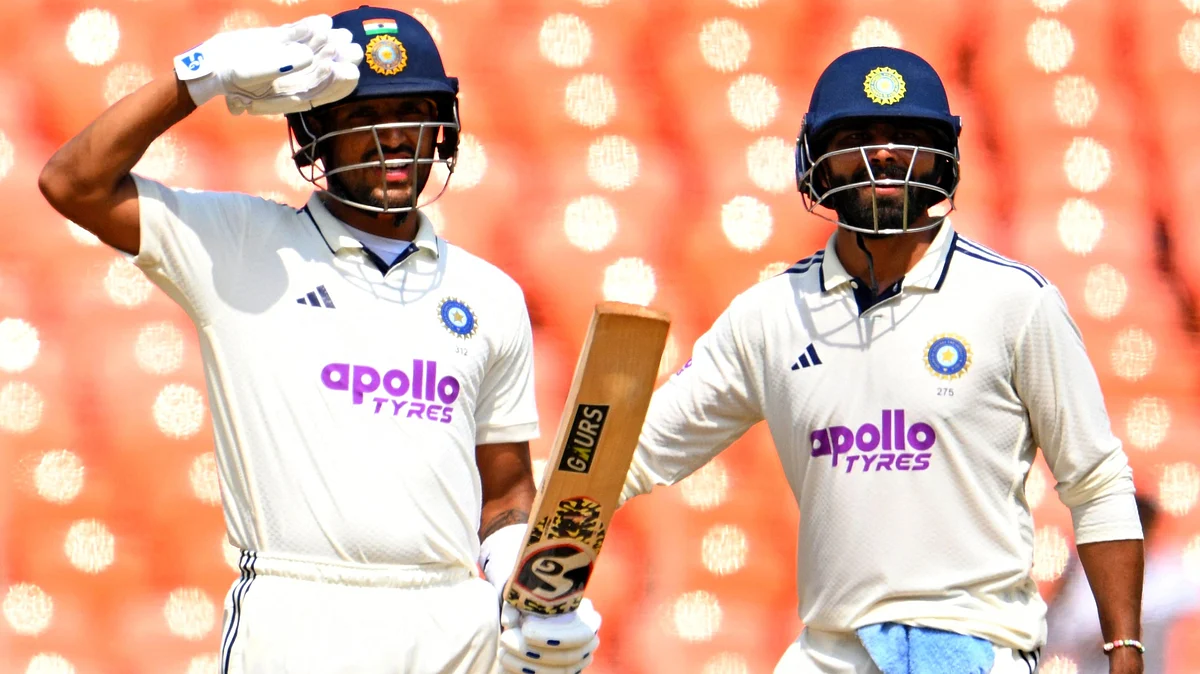Dhruv Jurel’s gun salute celebration after maiden Test ton sparks buzz
After completing a neat 125 runs on the second day, the 24-year-old celebrated with a dramatic military-style salute

Wicketkeeper-batter Dhruv Jurel marked his maiden Test century with a gesture that has quickly become the talking point of India’s opening Test against the West Indies in Ahmedabad. After completing a neat 125 runs on the second day, the 24-year-old celebrated with a dramatic military-style salute — a tribute he said was meant for both his father, a Kargil war veteran, and the Indian Army at large.
“The salute (celebration) after reaching my fifty was for my father, but for the hundred, it was something that I had in my mind for a very long time because I have been so close to the Indian Army,” Jurel explained after his innings. “I’ve seen my father since my childhood. What we do on the ground and what they do on the battlefield is very difficult and you cannot compare that. I will always have my respect and whatever I will do in the future will be for them.”
He added: “I would like to dedicate this to them (Indian Army) for what they do. I have seen them closely and I remain fascinated by those things. I also used to keep asking my father about it. I will dedicate it to those who deserve.”
The salute, delivered with bat in hand and eyes lifted toward the stands, was a moment of pure theatre that resonated far beyond the numbers on the scoreboard. While India piled up a dominant total — helped also by centuries from K.L. Rahul and Ravindra Jadeja — it was Jurel’s symbolic gesture that stole much of the spotlight.
Cricketing celebrations often take on meanings beyond the boundary, and Jurel’s salute comes in the wake of recent controversies involving Pakistani players at the Asia Cup.
During the tense India-Pakistan clashes, Pakistani batter Sahibzada Farhan celebrated a 50 by mimicking firing a rifle with his bat, while pacer Haris Rauf provoked further outrage with a fighter-jet gesture interpreted as a reference to military clashes between the two countries.
Both gestures drew criticism from fans and officials. The International Cricket Council (ICC) fined Rauf 30 per cent of his match fee, calling the celebration “provocative”, while Farhan received a reprimand. These incidents stirred debates about the place of nationalistic or militaristic displays on the cricket field, with some arguing that they fuel animosity rather than sporting spirit.
In contrast, Jurel’s salute has been widely received in India as a personal and respectful homage, rather than an antagonistic gesture directed at opponents. His explanation, rooted in his family’s military background, emphasised reverence and gratitude rather than provocation.
The contrasting receptions to these gestures highlight the thin line between personal expression and political symbolism in international cricket. While Farhan and Rauf’s actions were seen as provocative in a high-voltage rivalry, Jurel’s was embraced as a heartfelt tribute to soldiers.
Former players have often warned against letting political overtones overshadow the game, but in cricket-mad South Asia, symbolism is rarely divorced from national identity. Jurel’s celebration is already being hailed by Indian fans as a proud moment, one that blends sporting achievement with patriotic homage.
With his century, Jurel not only cemented his place in the team’s middle order but also placed himself at the centre of an ongoing conversation about how players choose to express themselves on the field — and how those gestures resonate far beyond cricket.
At stumps on Day 2, India stood at 448 for five, with Jurel (125), Rahul (132), and Jadeja (108) all scoring centuries to put the hosts firmly in control of the first Test against the West Indies.
With PTI inputs
Follow us on: Facebook, Twitter, Google News, Instagram
Join our official telegram channel (@nationalherald) and stay updated with the latest headlines
